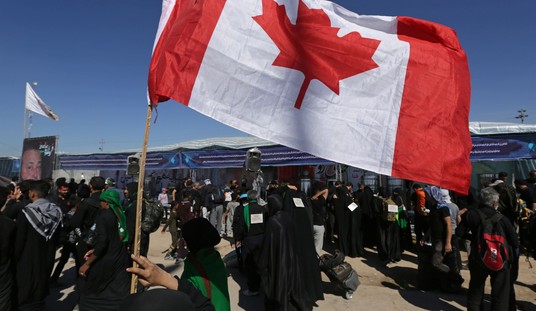A gratifying victory. The subtext of the ruling, wrote Peter Spiliakos, is that “the NY state and city governments were treating left-wing protest as a de facto state religion and were discriminating against other faiths.”
Gotta treat all creeds equally under the law. No special privileges for devotional wokery.
There were two separate issues here united by a common question: Did New York apply a double standard to religious gatherings in setting social distancing rules? Religious institutions don’t get special exemptions from laws of general applicability, i.e. laws that apply neutrally to the entire public. But if there’s reason to believe that the state is placing some special burden on religious institutions, that’s presumptively unconstitutional. You have the right to free exercise of your faith and you have the right not to be discriminated against in your exercise of that right. The state needs an exceedingly good justification to single out religion.
Cuomo and de Blasio began from a position of strength. In a vacuum, state and city orders mandating social distancing during a pandemic are classic examples of laws of general applicability. We need the whole public to work together to tamp down this virus, right? Well, that means you too, religious believers. Social-distancing rules are neutral — in theory. In practice, the story is different. The court picked through the thicket of regulations issued by Cuomo over the past few months and discovered that indoor religious gatherings are permitted no more than 25 percent capacity during Phase 2 of New York’s reopening whereas secular spaces like retail shops and restaurants are permitted 50 percent capacity. How come?
When Cuomo was asked about it at press briefings, he barely even tried to explain it: “’We are going to accelerate the opening of temples, mosques, [and] churches. . . . 25 percent occupancy is not as easy as 100 percent occupancy but 100 percent occupancy is a mass gathering and you really can’t do social distancing.’… He further advised New Yorkers to ‘[b]e smart. It does not mean you go to a temple or a mosque and you sit right next to a person. You have to socially distance.’” What does that mess of verbiage have to do with two separate capacity standards for indoor spaces depending on whether they’re religious or secular in nature?
Nothing, the court concluded. And so that double standard is now nuked, i.e. enjoined.
On its face, the 25% indoor capacity limitation applies only to houses of worship. See N.Y. Executive Order No. 202.38. Indeed, that limitation is the only one of its kind in the tangle of executive orders and the Guidance Document that have been issued in response to the pandemic; in other words, no other secular entity, save for those that remain closed in their entirety until Phase 4 or beyond, are limited to only 25% capacity. The “nonessential businesses,” dubbed “Phase 2 industries” by executive order, that enjoy a 50% capacity limitation are, however, not justifiably different than houses of worship…
All of this is to demonstrate that these secular businesses/activities threaten defendants’ interest in slowing the spread of COVID-19 to a similar or greater degree than those of plaintiffs’, and demonstrate that the 25% indoor capacity limitation on houses of worship is underinclusive and triggers strict scrutiny review.
If you’re going to target houses of worship for less preferential treatment, you need a way better justification than Cuomo’s word salad to get it past a court.
So much for discrimination aimed at indoor religious gatherings. What about outdoor religious gatherings, though? New York’s social distancing rules limit outdoor gatherings too, which led to the NYPD occasionally interrupting Jewish religious services like funerals. That rule may be generally applicable and neutral on its face, the court noted — but the enforcement of it certainly wasn’t. If it was, how can we possibly explain Cuomo’s and de Blasio’s cheerleading for the George Floyd protests?

Note the bit about encouragement. If Cuomo and de Blasio had so much as said an unkind word about mass gatherings amid the protests, the court might have let them slide on their regulations. But the hypocrisy, echoed by countless public-health experts who’ve defended the protests over the past month, is too great to be ignored. Banning certain outdoor mass gatherings while actively promoting much larger ones is indefensible scientifically and thus indefensible as a rule of “general applicability” and “neutrality.” These two morons made it easy for the court, and he took care to thank them by noting their hypocrisy at length. First Cuomo…


…then de Blasio, even more starkly:

There’s not even a pretense of consistency in their virtue-signaling. If Group A gets to have Woke Woodstock in the streets of New York with no complaints from authorities then Group B gets to have 20 people at an outdoor religious service.
It would have been painfully easy for Cuomo to reconcile all of these glaring hypocrisies with a new executive order quietly expanding the capacity rules for non-political outdoor gatherings. And, as the court says, it would have been even easier for him and de Blasio to just clam up and not egg on massive mass gatherings while riding herd on much smaller ones that are far less of a risk to ignite a new outbreak. The fact that they wouldn’t do either is solid evidence that bona fide religious discrimination was at work here. Well done by the court for calling them on it.








Join the conversation as a VIP Member